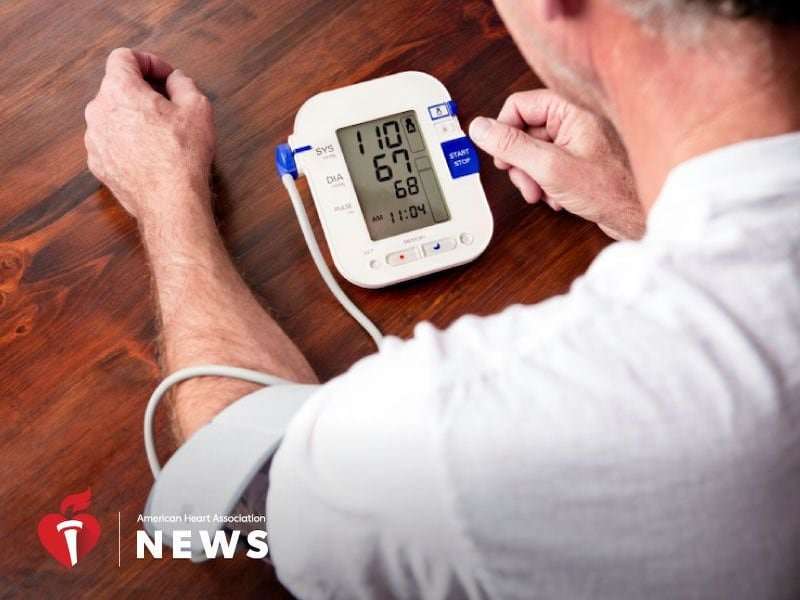How many days of checks needed to diagnose high blood pressure?

A routine visit to the doctor's office typically results in a single blood pressure measurement.
But for people on the verge of being diagnosed with high blood pressure, or hypertension, visits usually involve several additional checks at the office, along with a recommendation of having more taken at home. But how many?
At least three days' worth, according to a new study published Oct. 5 in the Journal of the American Heart Association.
"Our paper is really to help practicing clinicians figure out what's enough when it comes to number of measurements for them to feel confident that they have a good representation of patients' blood pressure outside the clinic," said study author Dr. Natalie Bello, an assistant professor of medicine at Columbia University Irving Medical Center in New York City.
Home blood pressure monitoring is a common approach after a patient has been screened at a clinic, but before the person receives an official hypertension diagnosis. That's because measurements taken in a medical office can sometimes be misleadingly high. For some patients, nerves or stress related to being at the doctor's office can be enough to spike blood pressure. In others, conversely, their number will look normal at the clinic, but high at home because of environmental factors.
The study looked at 316 adults who were not on medication for blood pressure. Participants did not have a history of cardiovascular disease and were otherwise healthy. Their blood pressure was taken multiple times during two clinical visits, and they were given a blood pressure monitoring device that electronically stores information from each use. They also were given detailed instructions on how to obtain the most accurate measurement possible.
Over two weeks, participants were asked to take measurements twice in the morning and twice again at night.
"Using the average of morning and evening readings, a minimum of three days are needed to reliably estimate out-of-office blood pressure and confirm a diagnosis of hypertension," the researchers wrote in their report.
Using blood pressure guidelines released last November, which set new hypertension thresholds, participants who consistently took two readings in the morning and two readings in the evening would only need two days of home measurements. If they only took one in the morning and one in the evening, the study showed three days was the ideal time frame to help confirm a diagnosis of high blood pressure.
The guidelines from the American Heart Association and the American College of Cardiology, which defined hypertension as a measurement of 130/80 rather than the previous 140/90, emphasized having patients monitor their own blood pressure as part of "hypertension diagnosis, treatment and management."
Dr. Paul Whelton, who chaired the guideline writing committee, commended the study's design and analysis but urged caution about some of its limitations. People who are candidates for home blood pressure monitoring because they may have hypertension are different than the ones seen in the study, he said.
The average age of participants was 42, and people with chronic kidney disease, overt cardiovascular problems and other health conditions were excluded, he said. In addition, the study included only a small number of people with diabetes.
"They were looking at a younger cohort that's healthier [but] if you walk into any clinic where you see patients with high blood pressure, they're going to be older and sicker" and have a combination of chronic conditions, said Whelton, an epidemiology professor at Tulane University School of Public Health and Tropical Medicine in New Orleans.
Blood pressure can easily fluctuate depending on when and how it is measured, he added.
"We take terrible measurements of blood pressure. But whether it's in the office or at home, it can be done well. You don't need to be a rocket scientist to do a good blood pressure," Whelton said.
Patients need a period of rest before the measurement and a proper cuff size, he said. They shouldn't talk and should sit in a chair with an upright back with feet on the floor. "Those are the key issues to avoiding predictable errors."
Bello said it's also important that patients use equipment that has been validated for clinical accuracy.
"Not everything that's available in the pharmacy has necessarily been validated," she said, urging people already using home-based devices to bring them in to their doctor's office for review at least once.
Copyright is owned or held by the American Heart Association, Inc., and all rights are reserved. If you have questions or comments about this story, please email editor@heart.org.



















